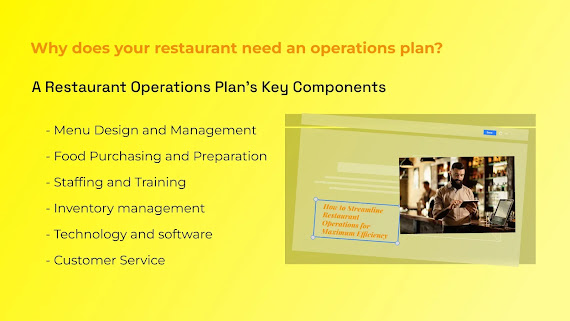Writing Effective Restaurant Slogans: A Quick Guide
What comes to your mind when you hear the following phrases?
“Finger licking good!”
“Expect more! Pay less!”
“Think different”
“A diamond is forever”
“Just do it”
“The happiest place on Earth”
Good copywriting evokes an emotional connection that stays in your mind. How can you leave such a lasting impression on your target audience’s mind?
Slogans are created to not just stick in the audience’s mind but remind them of you when they hear or see them. When done right it could take your branding game to a whole other level.
When it comes to restaurants, getting creative is a good idea. Before you get started, it's crucial to understand how slogans have been working for the food industry, what makes them so compelling, and some tricks and tips we’ve come across for creating effective restaurant slogans.
Restaurant Slogan
A good slogan is one that is easy enough to remember but also creates an association with your product or service.
Remember, your slogan will be used in all your marketing efforts, which means your restaurant slogan must be clear, memorable, and effective.
- Burger King – “Have it your way.”
- McDonald’s – “I’m lovin’ it.”
- Dunkin Donuts – “America runs on Dunkin”.
- Taco Bell – “Think outside the bun.”
These well-known slogans have immediate brand recognition and have fostered familiarity around the world.
Why is a slogan Important for restaurants?
Once you’ve come up with an idea, plan, and name for your business, next on the list should be a great slogan that ties all this together.
While the first things that spring to the minds of people when they think of brands are the logo and the product, what ties these 2 together is the slogan. A catchy slogan not only draws the attention of customers but also succinctly expresses the essence of the company, and also tells your customer what you do and why you do it.
An effective slogan also boosts brand recognition, helps your business stand out from the competition, allows you to build better relationships with your customers, and also builds demand for your product.
What makes a restaurant slogan popular?
There are a lot of things to consider when deciding what your restaurant’s slogan should be,
- Who is your target audience
- Can it showcase your brand and its principles
- The choice of words
- The placement
- The tone
- Pre-existing popular slogans
Tips for creating an effective Restaurant Slogan
Have you ever wondered what makes a restaurant slogan catchy? Most businesses have massive teams and budgets on their slogan, but what do you do if you run a smaller operation like a locally owned restaurant?
Well, we've got you! The following guide can help you create an effective slogan for your restaurant:
Think about your potential customers
The first step to consider while building any campaign is to think about the potential audience. Who are you trying to reach? The answer to this question will help you decide your slogan's tone, words, language, and placement.
Talk to people
When in trouble, get help! When it comes to your branding and marketing efforts, your best resources are right around you. Talk to your staff, family, and your customers.
An incredible way to get some seriously creative ideas is to run a contest to see who can bring in the best slogan. Reward them with free food… definitely more cost-effective than hiring an agency!
Keep it short and sweet
According to experts, a good slogan must be five words or less. But it is easier to write a full sentence or even multiple sentences and then shorten it. Remember that the goal of a slogan is to help people remember you; While a three-sentence description of your company is less likely to stick in the minds of people, it can definitely help you get to your slogan.
Another trick to creating memorable slogans is to include rhymes or alliterations in them. A good example is Arby's tagline, “Good mood food."
Make it unique and creative
Almost every restaurant will claim that their cuisine is amazing, their prices are fair, and their service is top-notch. Avoid such common phrases when creating a slogan.
Consider your concept, your cuisine, and the sentiment you want to evoke when ideating the slogan. Use words that make your restaurant stand out from the competitors. For example, Olive Garden’s former slogan “ When you’re here, you’re family”. They aimed to say that dining there was akin to dining at your kitchen table.
Put your offerings, ambiance, and culture into a succinct phrase or slogan to create descriptive imagery in the minds of your customers.
Examples of Inspiring Business Slogans for Food Businesses
Looking for some inspiration for your food company's slogan? Here are some catchy, taglines that have withstood the test of time
- KFC – Finger-lickin' good.
- Burger King – It takes two hands to hold a Whopper.
- Pizza Hut – No one outpizzas the hut.
- Arby’s – We have the meats.
- McDonald’s: I’m Lovin’ It
- Carl’s Jr. – Don’t bother me, I’m eating.
- Hardee's – Feed your happy.
- In-N-Out Burger – Quality you can taste.
- Qdoba – Food for people who love food.
- White Castle – The crave is a powerful thing.
- Taco Bell – Live mas.
- Wendy’s – You know when it’s real.
- Sonic – Service at the speed of sound.
Lastly, if you want to build your restaurant's brand, we are here to help. Talk to us!
Source: https://restaurantify.com/writing-effective-restaurant-slogans-a-quick-guide/




Comments
Post a Comment